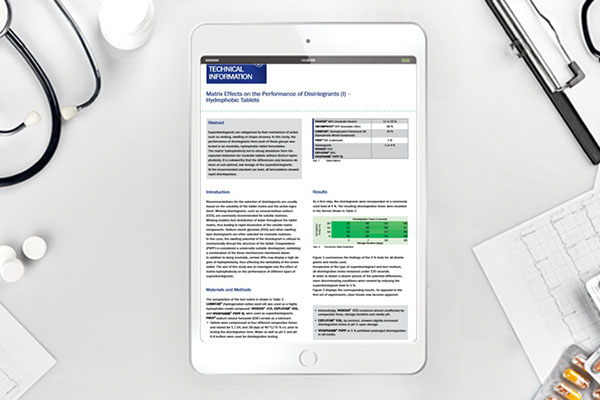Whitepaper: Matrix effects on the performance of disintegrants
Posted: 14 August 2020 | JRS Pharma | No comments yet
Superdisintegrants are categorised by their mechanism of action such as wicking, swelling or shape recovery. In this study, the performance of disintegrants from each of these groups was tested in an insoluble, hydrophobic tablet formulation.
Recommendations for the selection of disintegrants are usually based on the solubility of the tablet matrix and the active ingredient.
Wicking disintegrants, such as croscarmellose sodium (CCS), are commonly recommended for soluble matrices. Wicking enables fast distribution of water throughout the tablet matrix, thus leading to rapid dissolution of the soluble matrix components. Sodium starch glycolate (SSG) and other swellingtype disintegrants are often selected for insoluble matrices. In this case, the swelling potential of the disintegrant is utilised to mechanically disrupt the structure of the tablet. Crospovidone (PVPP) is considered a universally suitable disintegrant, exhibiting a combination of the three mechanisms mentioned above.
Related content from this organisation
- Modernising drug delivery through gel-based technology
- Webinar: A rational approach to excipient selection for solid dose formulation and development
- Video: High adhesion coating tablet with VIVACOAT® A
- Video: Optimise continuous manufacturing using PROSOLV® EASYtab
- Precision medicine for complex chronic diseases: how near are we?
Related topics
Drug Delivery Systems, Excipients, Formulation, Ingredients, Manufacturing, QA/QC, Research & Development (R&D)










